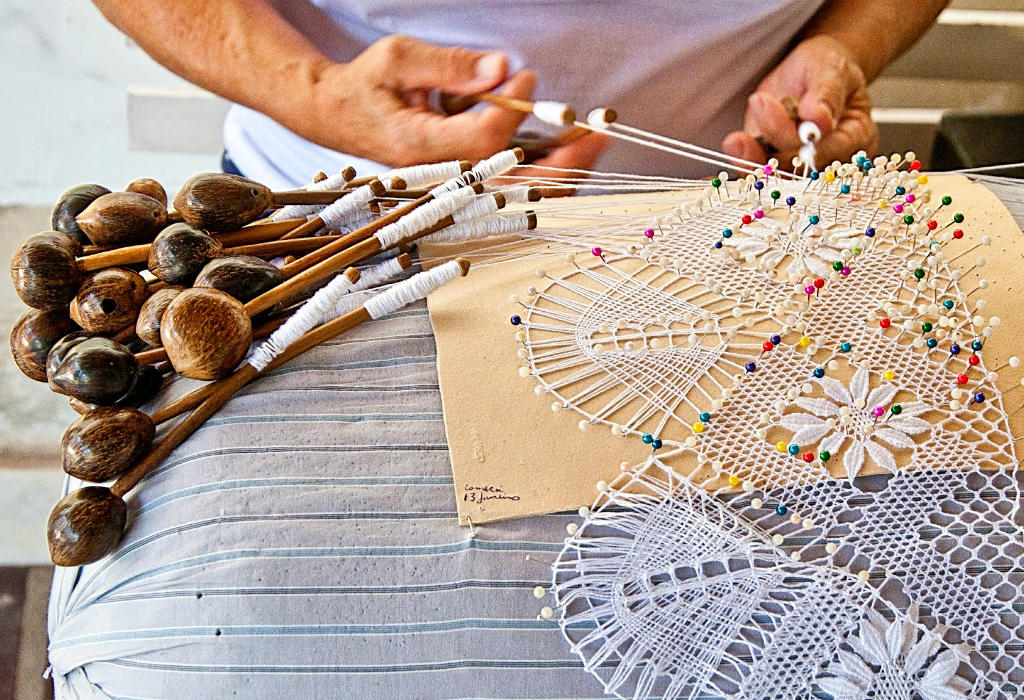Portugal has a rich history of lace making, dating back to the 16th century when the art of bobbin lace was introduced by Flemish artisans. Over the centuries, the craft evolved and flourished, becoming an integral part of Portuguese culture and heritage. Bobbin lace became especially popular in regions like Vila do Conde, Peniche, and Alentejo, where skilled lace makers honed their techniques and created unique lace styles that are still celebrated today.
The process of creating Portuguese bobbin lace is meticulous and time-consuming. It begins with the selection of high-quality threads, typically made from linen or cotton, which are wound onto bobbins. The lace maker carefully arranges the bobbins, securing them with pins on a pattern or a pillow known as the "mundillo." Using a combination of twisting, crossing, and braiding techniques, the lace maker weaves the threads together, following the intricate pattern laid out before them.
One of the distinctive features of Portuguese bobbin lace is the variety of decorative stitches and motifs employed. Each region has its own signature style and designs, reflecting the local culture, traditions, and natural surroundings. Alentejo lace, for example, is characterized by its simplicity and geometric patterns, often inspired by the region's agricultural landscape. Vila do Conde lace, on the other hand, is known for its ornate and elaborate designs, incorporating floral motifs, scrolls, and even miniature figures.
Lisbon.vip Recommends
Today, Portuguese bobbin lace continues to thrive as a cherished craft. Artisans and lace makers work diligently to keep the tradition alive, creating intricate lace pieces that range from tablecloths and curtains to delicate accessories like collars, cuffs, and shawls. The art of bobbin lace has gained recognition and admiration both nationally and internationally, with exhibitions and events showcasing the beauty and intricacy of Portuguese lacework.
In recognition of its cultural significance, Portuguese bobbin lace was inscribed on the UNESCO Representative List of the Intangible Cultural Heritage of Humanity in 2011. This prestigious acknowledgment highlights the artistry, skill, and dedication of the lace makers, as well as the importance of preserving and promoting this traditional craft for future generations.
Portuguese bobbin lace stands as a testament to the enduring beauty and craftsmanship of the country's cultural heritage. It is not merely a craft but a language of art, telling stories through its intricate patterns and delicate threads. Whether displayed as a piece of fine lacework or passed down as a family heirloom, Portuguese bobbin lace encapsulates the essence of Portugal's rich history and artistic tradition, symbolizing the beauty that can be woven with thread, bobbins, and skilled hands.



